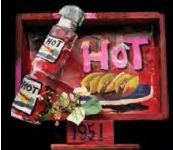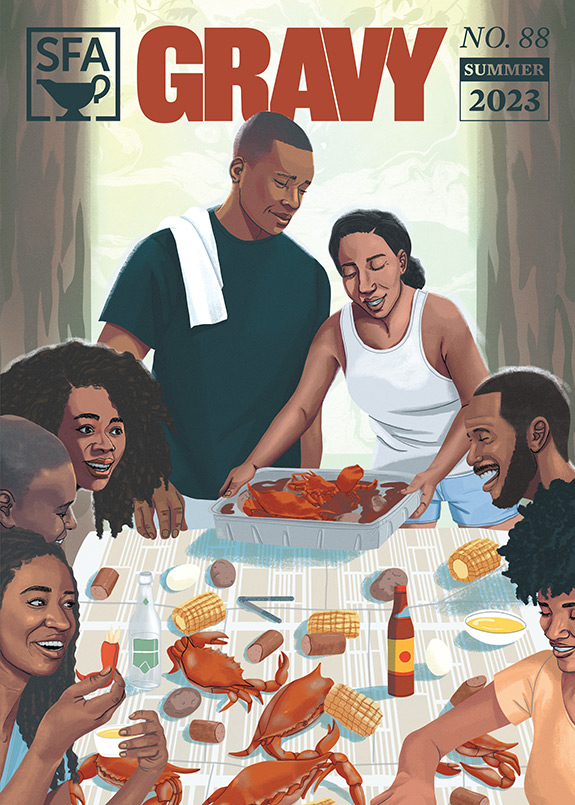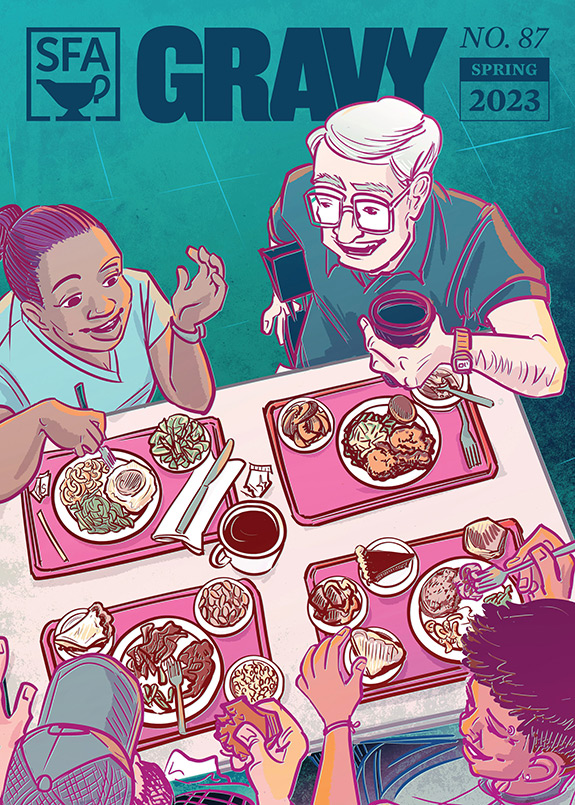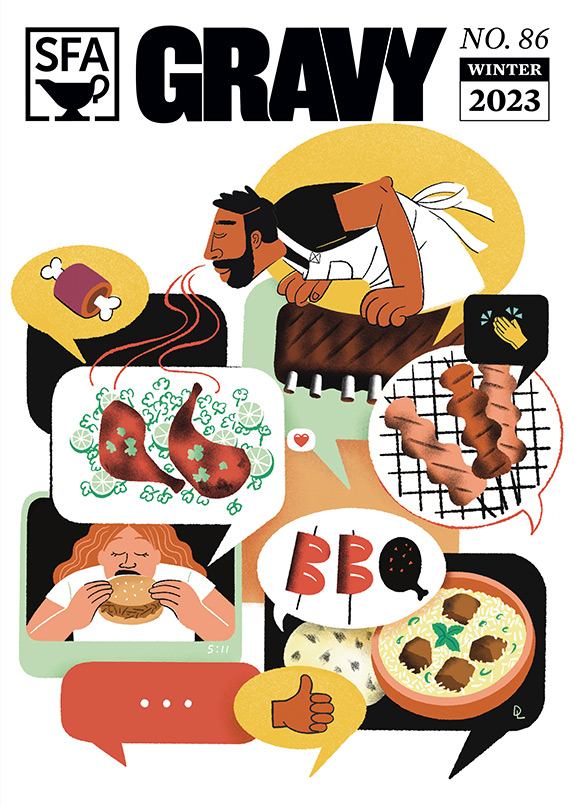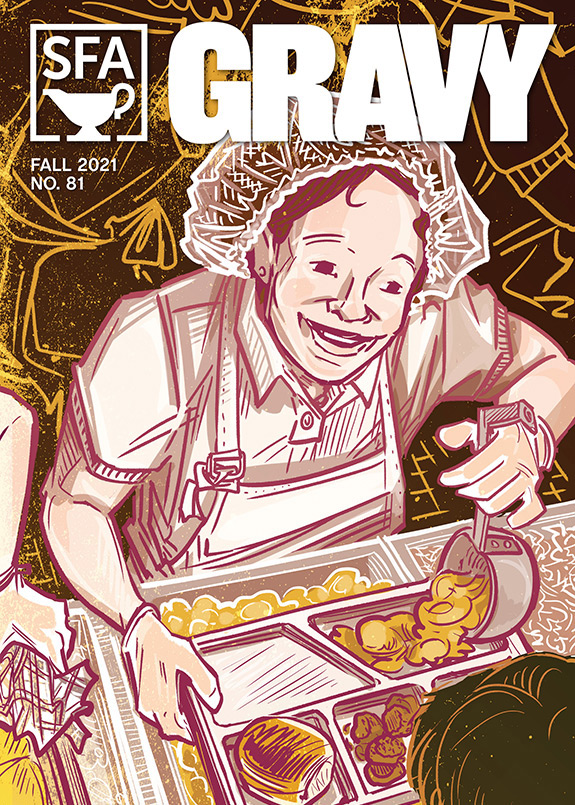His grandmother ran a country store in Thomaston, Georgia. Though the store burned before Smith can remember, he recalls playing in the woods behind the tumbledown remains, riffling through junked advertising signs. Like art, advertisements carry embedded messages, Smith realized. Through art, he has recognized the complement. Much of Smith’s work is rooted in Thomaston, where his grandmother raised chickens and stitched quilts. His fabric usage pays tribute to her talent with thread. And he honors her service as a church usher by sketching a line drawing of a church on the back of each painting, as part of his signature.
Layering paint, photographs, scraps of paper, and strips of fabric, Smith sells the viewer on ideas both overt and subliminal. Back in the 1970s, when Smith came of age and awareness, few blacks appeared in advertising campaigns. When they did appear, the portrayals were often based on stereotypes of the Aunt Jemima and Uncle Ben sort. Smith took those sins of visual omission as a challenge.
His first exhibit was a series of paintings inspired by a lyric from the 1989 Public Enemy anthem “Fight the Power”: “Most of my heroes don’t appear on no stamps.” With commercial advertising and photography as inspiration, Smith attempts a sort of projected inclusion. When Smith and Gravy editor Sara Camp Arnold were working to select the images that follow, he told her that he works to portray black life as “just as American” and “just as salable.” Smith practices a subversive nostalgia, sampling and elaborating the romantic advertising imagery used to sell Southern products both inside and outside the region. –John T. Edge
(Click to enlarge images.)







